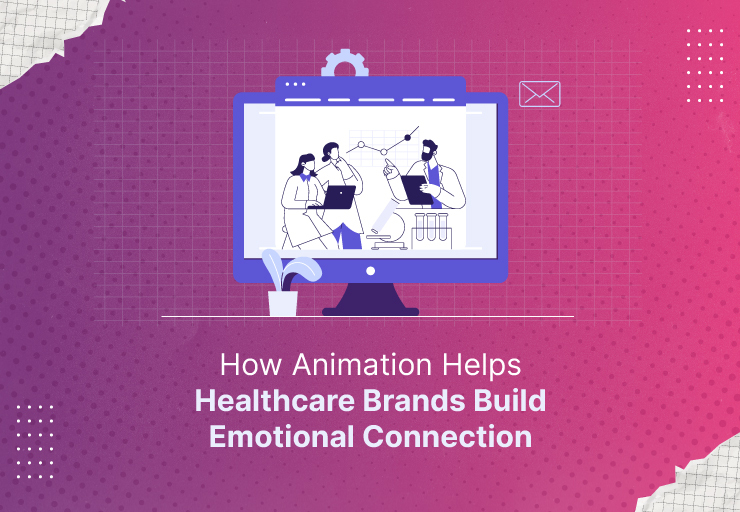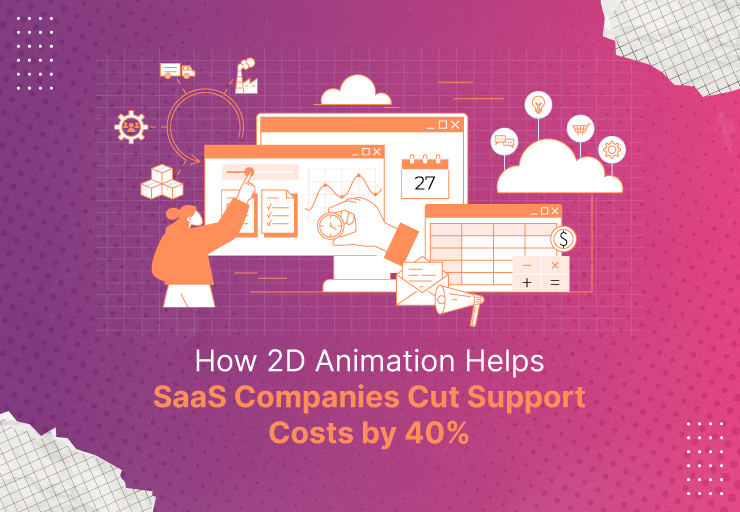
Healthcare brands have the challenging task of simplifying complex and difficult medical information for patients, making the medical information seem less intimidating and more accessible, and an animated video builds emotional connection. In this guide, we explain how animated videos, including options like 2D animation, 3D animation, Live action, and explainer videos, can humanize healthcare communications, build trust, and create emotional connections with healthcare brands and patients.
Marketers, clinic owners, and brand managers will understand why animation makes medical information easier to absorb and relate to, improves medical storytelling and patient understanding, and helps enhance patient perceptions of brand quality.
The effect animation has on making medical information easy to absorb
Healthcare topics are often complex, overwhelming, and use jargon, which can make patients uncomfortable and even lead them to avoid accessing essential medical information. Animated videos break the complexity down into simple narratives that audiences can easily understand.
Research on anxiety and confidence levels shows that visual-based materials mitigate anxiety by making medical procedures and interventions less difficult to digest, which in turn increases patient confidence and engagement levels.
Animated videos utilize color, motion, and storytelling to engage both cognitive and emotional aspects of the brain; this approach supports patients in remembering the information and feeling comfortable and respected in the material they have just read or watched, which are key factors in improved healthcare outcomes and patient empowerment.
Simplification Through Visual Storytelling
Animated explainer videos can show patients how medical treatments work, how medical devices work, and what policies in healthcare mean. For example, a 3D animation of a surgical procedure allows patients to see and understand what is happening to their bodies during a surgical procedure.
The visual simplification improves patients’ understanding and compliance with treatment.
Additional Read:
How Animation Explainer Video Helps Build Confidence in Patients for Plastic Surgery
How Storytelling Through Animation Builds Trust and Comfort
Using animation to neutralize or humanize, healthcare content uses emotional storytelling, which helps to create trust. Animated characters representing the patients’ or a healthcare provider’s perspective can help show empathy for the patient’s feelings of anxiety, and can portray important compassion and support.
Research shows that patients who feel like they have an emotional connection to healthcare information report greater satisfaction and are more likely to facilitate an interaction with their care. The animated depictions of patients’ experiences, shown through animation and testimonials, are able to demonstrate a journey through treatment and recovery without the fear of losing privacy and confidentiality.
This type of storytelling reduces stigma and normalizes healthcare experiences.
Building Emotion Connection with Characters
Utilizing animated characters helps the patient feel empathy and comfort. These relatable characters can model emotional responses and coping strategies, which help the patient feel understood.
This kind of engagement through storytelling is informative, but also provides reassurance. This is a critical component of healthcare communication when delivering content about sensitive healthcare situations.
Ways Animated Videos Improve Patient Understanding and Emotional Connection
Healthcare animated videos can support learning by leveraging visuals, narration, and movement in one animated product to engage different learner types. Patients will typically learn and retain more when learning is active, not merely via dense text or images.
Animated videos can also alleviate anxiety by clearly outlining a procedure or what they can expect. Once the patient is more confident, they are more likely to follow medical recommendations. The ability for patients to view the video on demand allows for learning at their own pace and gives them a sense of control over their health.
Examples of Successful Healthcare Animation
- Explainer videos that introduce patients to new surgical techniques can improve patient understanding while also alleviating nerves before their procedure.
- Animated guides to lab tests can provide clarity on testing options that take place in a home-based setting for both diagnostics and results, leading to improved completion rates to improve.
- Patient journey animations provide patients with a visual roadmap of their care, allowing for improved preparation, realistic expectations, and consultation time reduction by as much as 20%.
Investing in Animation for Improved Engagement and Brand Perception
The use of animated video in healthcare is growing exponentially, as this segment has expanded considerably in recent years, largely due to the demand for clear and empathetic communication. Brands that invest in professional animated content report improved patient experience, increased patient trust, and improved brand recognition.
Having a consistent animation style at multiple touchpoints will help reinforce brand identity, which could drive healthcare revenues and brand loyalty. Animation also performs very well on digital and social platforms with significantly higher engagement rates compared to written content.
Best Practices of Healthcare Animation
- Know your audience–Be clear on who you are messaging.
- Instill empathy and compassion in the narrative|story to address patient anxiety.
- Use relatable characters and a story to establish emotional capacity.
- Keep videos concise and engaging in visuals to sustain attention.
- Use measure [impact] of content through engagement metrics, patient understanding, and health outcomes.
Conclusion
KrishaStudio excels at making relatable and emotionally engaging animated videos that communicate complicated healthcare content, while also building relationships with patients. Our team creates a balance between clinical accuracy and storytelling by connecting humans to patients, allowing a healthcare brand to build trust with patients, knowing that clinical guidelines and outcomes are followed. You now know how an animated video can help raise emotional connection with the reader, so use it to help highly engage and communicate more effectively with patients.


